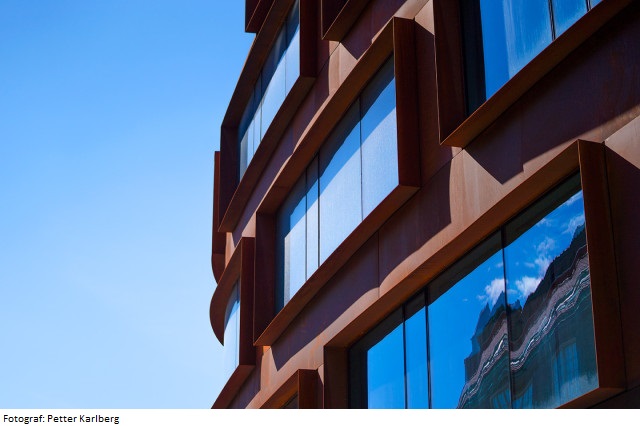In a small renovation project, students explore tectonics, ornament, and transformation. The focus in the course is on the design of various building components and the connections between them, and on developing a fundamental understanding of lifecycle thinking in relation to architectural structure and the choice of materials and systems. Students problematize lifecycle thinking in relation to constructability, adaptability, and deconstruction (for reuse or recycling). They are expected to actively deepen their knowledge of a building’s components and parts through studies of vertical and horizontal spatial and physical boundaries, and of the detailing of its walls, roof, floors, openings, stairs, and foundation.
A21P2B Architecture Project 2:2 - Tectonics, Ornament, Transformation 5.0 credits

Information per course offering
Choose semester and course offering to see current information and more about the course, such as course syllabus, study period, and application information.
Information for Spring 2026 Start 13 Jan 2026 programme students
- Course location
KTH Campus
- Duration
- 13 Jan 2026 - 13 Mar 2026
- Periods
Spring 2026: P3 (5 hp)
- Pace of study
33%
- Application code
60081
- Form of study
Normal Daytime
- Language of instruction
Swedish
- Course memo
- Course memo is not published
- Number of places
Min: 5
- Target group
- ARKIT study year 2
- Planned modular schedule
- [object Object]
- Schedule
- Part of programme
Contact
Course syllabus as PDF
Please note: all information from the Course syllabus is available on this page in an accessible format.
Course syllabus A21P2B (Spring 2023–)Content and learning outcomes
Course contents
Intended learning outcomes
Through drawings, images, text and models, both physical and digital:
- Investigate the concepts of tectonics and ornament through studying an existing building, in drawing and in model.
- Master the basics in technical drawing and drawing standards, and acquire an understanding of the relations between drawings and different drawing scales.
- Acquire a deepened knowledge on the architectural detail through an investigation in drawing/model about its possible construction and expression.
- Design a smaller tectonic reconstruction that works as a transformation of the object of study.
- Discuss the application of life cycle analysis in the study object, proposal and/or the both.
- Describe and discuss the architectural qualities in the project in relation to the assignment.
- Compile the project to a presentation that includes a reflection over the result, references and a part of the process.
Literature and preparations
Specific prerequisites
Project 2:1 (A21P1C) must be approved or assessed to be approved after completion.
Literature
Examination and completion
Grading scale
Examination
- APRO - Architecture project, 5.0 credits, grading scale: P, F
Based on recommendation from KTH’s coordinator for disabilities, the examiner will decide how to adapt an examination for students with documented disability.
The examiner may apply another examination format when re-examining individual students.
If the course is discontinued, students may request to be examined during the following two academic years.
Other requirements for final grade
General:
Learning outcome objectives are tested in design projects throughout the entireundergraduateprogram through students’ presentation of their process and results in assignments specified at the start of each course. To pass a course, students must also complete all assignments and have at least an 80% attendance at lectures, seminars, teaching opportunities, and assignment reviews.
Whether each student has fulfilled the learning objectives is determined by the examiner in conference with other faculty. They evaluate the student’s performance based on the following four parameters:
1. The student’s working process, project development, and questioning, and his or her documentation of these.
2. The student’s ability and skill to satisfactorily use and handle relevant representational forms and techniques and other design tools based on lectures, assignments, and learning objectives.
3. The student’s final presentation, the project’s qualities and possibilities, based on the student’s architectural and artistic exploration.
4. A reflection on the individual learning process must be handed in.
The project must be conducted within the given time frame of the course.
Special regulations for completion apply. The rules for completion can be found on the programme web.
Examiner
Ethical approach
- All members of a group are responsible for the group's work.
- In any assessment, every student shall honestly disclose any help received and sources used.
- In an oral assessment, every student shall be able to present and answer questions about the entire assignment and solution.